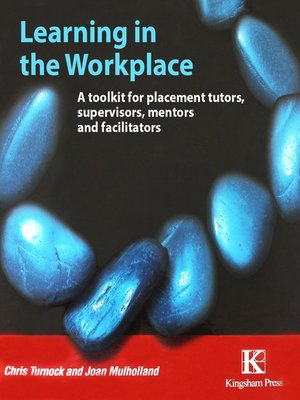Learning in the Workplace
ebook ∣ A toolkit for placement tutors, supervisors, mentors and facilitators
By Chris Turnock

Sign up to save your library
With an OverDrive account, you can save your favorite libraries for at-a-glance information about availability. Find out more about OverDrive accounts.
Find this title in Libby, the library reading app by OverDrive.



Search for a digital library with this title
Title found at these libraries:
| Library Name | Distance |
|---|---|
| Loading... |
One of the main problems with work-based learning is that many practitioners have not acquired the necessary knowledge and skills to provide effective support for a student undertaking a work-based placement. Furthermore, many placement providers may be small organisations or the student may be having a one-off placement. Such circumstances make it difficult for the placement provider to ensure the supervisor has been adequately prepared for the role. In addition, student supervision is often seen as an add-on activity resulting from insufficient numbers of suitably experienced and prepared staff expected to cope with workloads that often fail to reflect their educational responsibilities (Spouse 2001). The aim of this toolkit is to provide a potential supervisor with the material to facilitate their preparation for the role of supervising a student undertaking a work-based placement. The toolkit may not only be useful to novice supervisors, but also more experienced people who would like to enhance their role as a work-based supervisor. The design of the toolkit has been done so that the user can self-assess for a number of reasons. It enables the user to assess knowledge base, but to also apply the concepts in the toolkit to their work setting. The toolkit will also assist the work-based supervisor to meet relevant professional standards. The toolkit contains exercises for users to explore ways to develop their own professional practice and also facilitate development of practice in the workplace. Each dimension of the assessment activity includes assessment of current practice in relation to a unit's topic, reflection and review of that practice, action planning to improve practice and, dependent on timescale, monitoring and review of the action plan. The material produced by undertaking these activities could be incorporated into a personal portfolio. This would contain evidence that users, who wanted to, could use the learning experiences arising from working through the toolkit for formal academic accreditation with a higher education institution.







